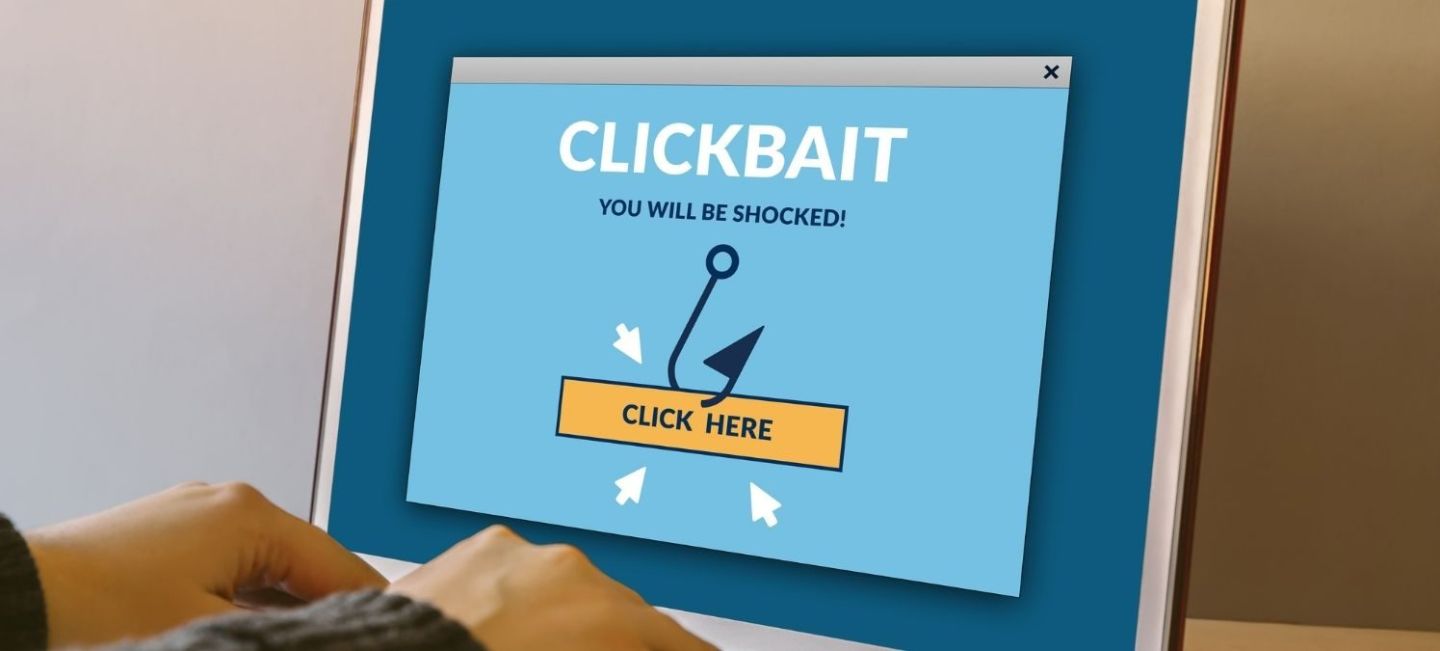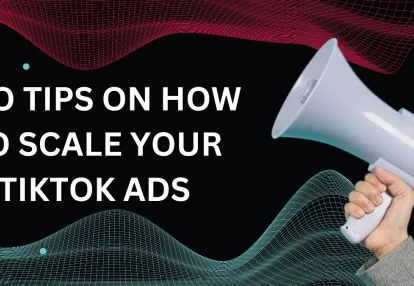
Our tools monitor millions of native, push, pop, and TikTok advertising campaigns.
Get StartedNative advertising is just one of the many options out there for attracting customers, but what makes this so special is how effective it is for businesses. One can say that Native ads were made to replace traditional banner advertising. Such statements are not unfounded as the two formats possess opposing features. Although native ads are "younger" than banner ads, it is already being used very widely by small and large businesses.
Native advertising has its perks which include a high success rate and high CTR, but, this does not guarantee your ads would be successful. Native ads are bound to have poor results if you don’t do it right.
Non-engaging creatives and poor targeting will only make your campaign irrelevant. The aim of this article is to show you how to avoid creating stale and useless native ads, and maximize your profit with successful ones.
There are a lot of things to know if you want to do it right. These important points have been rounded up into seven steps. These steps will show you how to leverage native advertising and increase the performance of your business. Let’s dive in.
Your native ads would be of no use if the right audience can’t see them. When creating native ads, you have to familiarize yourself with the mindset of your target audience. For example, the mindset of users on social channels would be recommendations, news, live updates, and familiar brands -- basically, publications oriented.
On the other hand, the mindset of users on a search channel would basically be information-oriented.
The mindset of native advertising users is a bit different. Such users like to explore and discover new things. You can utilize this to your advantage by making sure your ad aligns with the interest of these users. How to do this? Well, it’s pretty simple: all you have to do is check out your publishing website's audience to see if they match your target.
For instance, Forbes, Entrepreneur, and Fortune are publishing websites that cater to business enthusiasts. If your offer has anything to do with business and finance, then these publishing websites are a match for you. If you're promoting a dating offer though, chances are, your ads will not work.
So once you know who your target audience is, the next step is to think about the content they are most likely interested in.
Your content should be any of the following:
For your content to attract users it has to relate to them. It should match with their behaviors and interests or solve a problem. This would make your native ad relevant to your target audience.
Ensure you share relevant information for readers who want to learn. Or at the very least, it would help them solve a problem typically encountered by this target audience.
Don’t just reproduce content already on the web. Make something new or give readers an exciting reason to revisit old content.
If you’re having trouble defining your target audience or this is your first time doing this, do not panic. What you should do is create your target persona. To create your persona, do some market research to insight into your prospective customer.
Here are some points to make your research easier:
When you create content that resonates more with your target audience, it will prompt them to take the desired action, leading to more clicks and a higher conversion rate.
Once you understand your target audience and you already know which websites you want to advertise in, the next step is developing your ad in a way that does NOT stand out. This may sound weird, but the main goal of a native ad is to be less intrusive and appear to be not that all different from the content on the website.
Your creatives should carry the message of the ad but also blend in. Research showed that a good percentage of visitors avoid attention-seeking ads; this is one of the reasons traditional banner advertising has gone down the drain. According to Yahoo surveys, content-based ads attract the attention of a whopping 93% of visitors on the site.
This means that 93% of users view the headline of your native without it standing out. For this reason, native ads generally have a higher click-through rate because there is a high chance that users would click on your ad to learn more.
Here are some tips for creating a native ad that fits in:
The first thing users see when they come across your ad is the headline. Using some effective keywords in your headline can increase the chances of driving a higher CTR.
Your headline has to be captivating enough to pique your audience’s curiosity. Some top keywords include “inside”, “family”, “photos” and “beautiful”.
Some keywords also have potential but fall short because of competition. This includes “game”, “online”, “free”, and “life”. While these keywords used to be effective, overuse has caused them to become too common now.
Remember that there would always be less resistance from your users if you use an effective headline.
The second step to creating a less intrusive native ad is selecting the right image. You can always carry out tests to know what image works best with your ad, though most people report that the black and white photos and images without text generally have a higher CTR.
This has been said over and over: look into what those who are performing well in the same industry as you are doing.
After all, if their business is doing well, then they must be doing something right!
Aside from stalking their social media accounts, their websites and their blogs, you can spy on their native ads. Here in Anstrex, you can even see the ad's performance the past few weeks, whether it's been converting well, how long they've been using the same ad, what dates they run the ads, what ad variations they have, what traffic networks they use, and more.
Here's an extensive list of ad spy tools that can help you decide the best tool based on your needs.
Now that you have a great piece of content, the next question is how do you deliver it to the right people? This is where targeting comes in handy. Your content may end up useless when not seen by the right audience.
If you’re not still sure of your target audience, especially when starting a new platform, here are some tips to help you out:
Always keep your targeting options wide. This is the first step to understanding what your audience wants. Don't narrow down too quickly, hoping you made the right decision.
When you keep your targeting options open, you can narrow down your audience to who responded. You can narrow down based on location, carrier, ad placement (site), and more.
See how your headlines and photos resonate with your audience. If it doesn’t fit with your audience, try new creatives to find out what works best. Split-testing at the onset can help reduce the tasks you need to do further along the line.
Now that’s out of the way, take note of some other targeting options to make sure your ads get to the right audience:
The secret to making successful native ads is not just about creating and targeting. Maintaining and adjusting your ad is also important. Always monitor your ad’s performance and change whatever needs to be changed to make them better. This is vital because you can filter out ads that are successful from ads that just waste your money.
To know what needs to be changed, you should optimize your ads in the top and middle of the funnel.
Here are some formulas that help determine your ad's performance.
This formula above helps you determine if your ad is catchy enough to gain your potential audience's attention.
If your users get to your landing page but fail to convert, then the problem is from you. To increase your conversion rates, try changing some of the elements of your landing page or design a new one.
There may also be some disconnect between your ad and landing page, or your landing page and offer page. Split-testing is the key to finding out the possible reasons.
Most of your optimization data can be monitored through your tracking platform, so make sure to utilize a reliable one.
The main goal of any campaign is lead generation, not just any lead, but quality lead generation. Did the lead convert into a paying customer? Or if you are an affiliate, did the advertiser deem your traffic to be of quality to allow you to continue sending traffic?
The data you should look out for in this optimization portion is the sales opportunities generated from your leads. Campaigns that fail to generate enough sales opportunities or meet your goal should either be optimized to increase performance or be deactivated.
It’s not nice to trick people. Using clickbait to deceive users has negative consequences and would always lead to an unsuccessful ad. Native ads are not deceptive and should never be used as such.
Though native ads blend in with the contents of a website, you can see the differences. Also, your ads should always reflect the content or message you’re offering.
Deceptive tactics destroy brand trust and credibility. People won’t trust you or buy your products if you try to trick them. If you want your native ads to work then be honest.
This is a great way to improve your traffic quality (as an affiliate), making your advertiser trust you and maybe even increase your rate.
As native ads become more and more popular, there will surely be an increase in demand. This makes the publishers more powerful and strict with the ads they allow to be displayed on their websites.
Nevertheless, do not be deceived by pricing. You may think that publishers who offer the highest cost per click have something spectacular to offer, but not all high-priced publisher services deliver the best results.
At first, trying out new publishing websites and advertising platforms would be like checking a food menu, but as time progresses you begin to understand better and know what to expect from each of them. If you are not meeting your goals, keep trying other platforms or publishing websites until you achieve what you want.
Now that you know all these steps, here are some examples of native ads with good creatives, targeting, and customer knowledge.

As can be noticeable from the image, the target audience are stay-at-home moms who are looking to earn from home while taking care of their kids. This gives the impression that the opportunity allows you to earn a lot of money from the comfort of your own home and that it is easy to do.
Of course, the text helps reinforce that this offer is available in Hungary. First, the language is Hungarian, and second, a specific Hungarian town is mentioned -- Gyál.

Even without saying the word "fast", this native ad leads the reader to believe that with Bitcoin, you can be rich fast. This is because the image features a man who still looks relatively young, standing in front of what seems to be his own luxury car.
The target market is young, single men from Laval. This is fully reinforced by the image, ad text, and even ad description.

A woman surrounded by boxes of kitchen stuff with the words "Freebies" and "Free"? This native ad is obviously a sweepstakes offer targeting mothers or single women who love couponing and receiving free home items.
The advertiser knows his target audience very well, seeing as he used an image of a woman who is obviously a homemaker and whose interests lie in the household.
Including the audience's location greatly increases the chance of conversion, which is why using dynamic city token (resulting to "Los Angeles") within the ad description works for this ad campaign. The same technique has been done in the first two ads above.
----
One common feature of all these examples is that they make use of photographs to narrow down to their target demographic. Native Ads platforms can't hyper-target users based on gender, age, and financial status -- a problem that images can easily solve.
If you resonate with the image in the ad (the most eye-catching portion of the ad), then you will more likely read the ad text and eventually click on the ad.
Another common feature is the city token. If your city is mentioned, chances are you will be more interested in the ad and offer because it means the ad is meant for a small group of people, and "luckily", you are one of them.
Native advertising has the potential to shoot your sales through the roof when utilized correctly. When you connect to your audience on a deeper level, tailoring your ads to be relevant to them would be a piece of cake.
Remember that no matter how good your ad is, if it fails to reach the right audience, then it becomes worthless.
All you have to do in a nutshell is:
There is a lot to learn about native ads, and this article was made to point you in the right direction.
Learning the ropes can take a little time, but continuous testing and asking the right questions are key to finding the ads that can bring in the Benjamins. What are you waiting for?
Receive top converting landing pages in your inbox every week from us.
Featured
TerraLeads is a direct nutra-advertiser and CPA network that has been operating in the market for over 8 years.
Elena Morales
7 minApr 11, 2024
None
If your campaigns are already generating revenue but you want to reach more people or gain more sales, then it's time to scale your TikTok Ads! Here's how to do that.
Jairene Cruz
7 minFeb 15, 2024
Featured
To succeed in dropshipping, choosing the right niche is crucial. Not all niches are profitable, but we'll discuss here here those that you must really avoid. Keep reading!
Jairene Cruz
7 minNov 23, 2023










